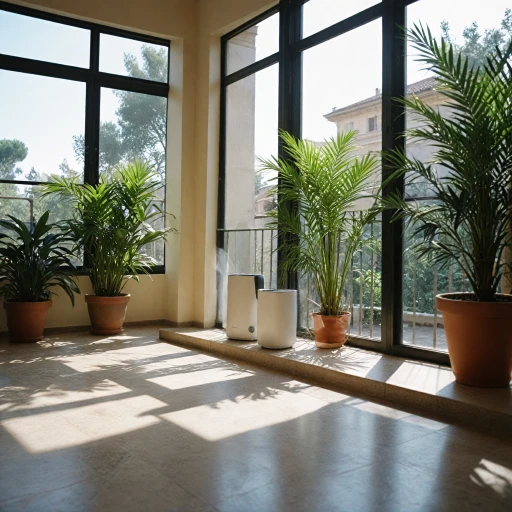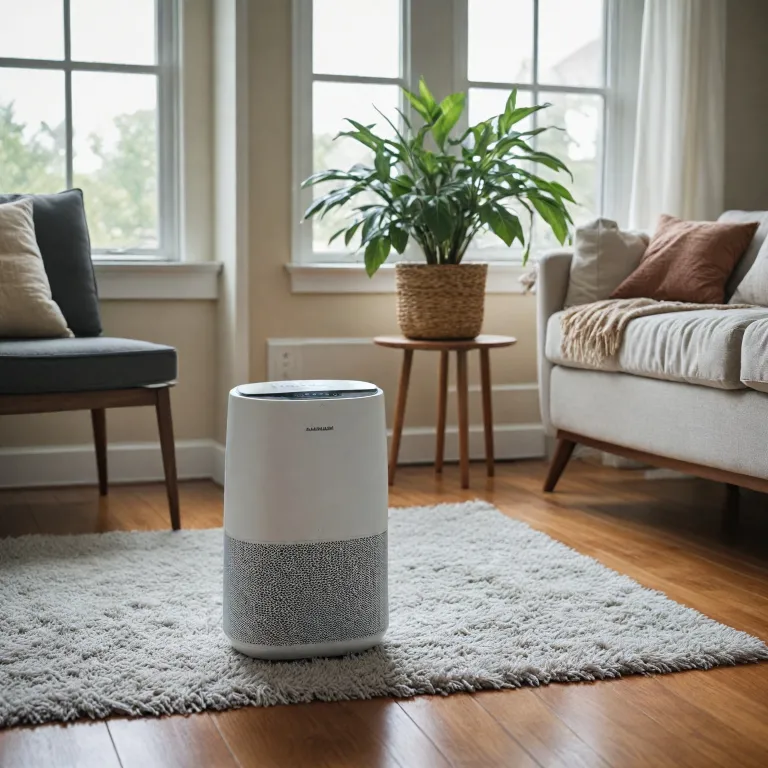Understanding How Air Purifiers Work
Mechanics Behind Air Purifier Functionality
Air purifiers are fascinating devices designed to improve indoor air quality by removing airborne particles and unpleasant odors. Understanding the mechanics of how they operate begins with acknowledging their essential components: filters. These devices often include High-Efficiency Particulate Air (HEPA) filters and activated carbon filters, each serving a distinct purpose.
HEPA filters are renowned for their ability to capture tiny particles, like dust pollen and smoke. These filters are incredibly effective, capturing up to 99.97% of particles as small as 0.3 microns in size. By trapping these minute particles, air purifiers can significantly reduce airborne irritants that contribute to poor air quality.
Meanwhile, activated carbon filters play a crucial role in odor removal. These filters contain porous, carbon-based material designed to attract and hold volatile organic compounds (VOCs) responsible for various smells in the home.
Beyond their filters, many air purifiers employ technologies like ionizers, which release ions into the air to bind to particles, or even ozone generators, although these can sometimes produce more harm than good. However, it’s the combination of filters, particularly activated carbon, that makes purifiers effective in addressing stubborn odors.
For those interested in deepening their understanding of how these filters function, I recommend learning more about charcoal filters' effectiveness in air purifiers
here. This article provides insight that complements the information on how these devices can enhance air quality over the long term.
In subsequent sections, we will delve into the specific kinds of odors these gadgets can tackle, including pet and smoke odors, and explore what makes certain air purifiers more effective than others in maintaining a clean smell indoors.
Types of Odors Air Purifiers Can Address
Addressing Various Odors with Air Purifiers
When it comes to removing odors, air purifiers have different levels of effectiveness depending on the type of smells they combat. Understanding these nuances can be essential in choosing the right solution for your home or office.
Air purifiers often help in eliminating odors, especially from common indoor pollutants such as smoke, pets, and cooking. These purifiers use various technologies, including HEPA filters, activated carbon filters, and sometimes additional mechanisms like UV light or ozone generation to target and remove odor particles.
- Smoke odors: Tobacco or cooking smoke, for instance, contains multiple tiny particles and volatile organic compounds (VOCs) that an effective air purifier can capture. Models equipped with advanced smoke filters are particularly good at handling these types of smells.
- Pet odors: Even the cleanest pets can have unpleasant smells. While an air purifier won't eliminate them entirely, a purifier equipped with a good carbon filter can significantly reduce these odors by absorbing the compounds responsible.
- Cooking smells: Depending on the ingredients used, cooking can release a variety of odors into the air. Some of these might be pleasant initially but can become quite persistent if not dealt with effectively. Activated carbon filters are particularly useful here, as they target and trap the organic compounds involved.
- Volatile organic compounds (VOCs): Beyond the more apparent sources of odor, VOCs emitted by household products such as paints, cleansers, or air fresheners can also contribute to indoor air pollution. Some air purifiers are specifically designed to reduce VOC levels, contributing to overall air quality improvement.
In selecting an air purifier for odor control, it's crucial to understand which pollutants are most present in your environment and choose an appropriate model that can capture and neutralize these specific smells. For an exploration of how specialized filters, like
spherical smoke filters, can enhance your air purifier's effectiveness, consider taking a closer look at available options
here. This knowledge can guide you in making a more informed decision, ultimately resulting in a cleaner, fresher indoor environment.
The Role of Activated Carbon Filters
How Activated Carbon Filters Contribute to Odor Elimination
Activated carbon filters are a significant component in air purifiers when it comes to addressing persistent smells and enhancing air quality. These filters are integral for capturing and absorbing volatile organic compounds (VOCs) and other gaseous pollutants.
- Adsorption Process: Activated carbon filters operate through a process called adsorption. Unlike absorption that involves soaking up substances like a sponge, adsorption captures particles on the filter surface. This makes them particularly effective at trapping gases and VOCs associated with unpleasant odors.
- Chemical Structure: The porous nature of activated carbon means it has an expansive surface area. This structure allows for maximum interaction with air impurities, thereby trapping a wide range of odor-causing compounds.
- Targeted Odor Removal: These filters are not only effective against general unpleasant odors but are also efficient in eliminating specific smells from smoke, pet odors, and other organic compounds.
The combination of HEPA filters and activated carbon filters often provides more comprehensive filtration, tackling both particles like dust and pollen, as well as odors. For more insights into how air purifiers target smells, check out
air purifiers and odor effectiveness.
In an indoor environment, maintaining clean air is crucial for both comfort and health. However, while activated carbon filters are essential for controlling odors, it's vital to recognize the limitations of air purifiers in odor removal scenarios, which will be discussed further in the subsequent sections.
Limitations of Air Purifiers in Odor Removal
Challenges in Eliminating Odors with Air Purifiers
While air purifiers can significantly improve indoor air quality by removing particles like dust pollen and volatile organic compounds (VOCs), they do have limitations when it comes to odor removal. Here are some factors to consider:
- Not All Odors: Air purifiers, particularly those with HEPA filters, are very effective at capturing particles such as smoke and dust, but they may not be as effective in eliminating all types of odors. Unpleasant odors that arise from organic compounds or are caused by cooking, pets, or mold might linger if not adequately addressed by the device's filtration system.
- Filter Type Matters: Some air purifiers rely primarily on mechanical filters, such as HEPA filters, which are excellent for trapping airborne particles but are less effective against gaseous pollutants that cause odors. Activated carbon filters are essential for targeting and removing these specific pollutants. However, their effectiveness can vary based on the quality and quantity of activated carbon used.
- Ozone Emission Concerns: Be cautious of purifiers that generate ozone, as they might create more complex compounds that have their own odors and potentially harmful effects on air quality in the long term.
- Size and Power Constraints: Ensure that the air purifier is appropriately sized for the room in question. A purifier that's too small for a large space may not clean air efficiently, allowing odors to persist.
- Continuous Operation Needed: For consistent odor elimination, air purifiers must run continuously, as odors can return if the source of the smell isn't managed or removed.
Understanding these limitations can guide you in choosing the right air purifier and managing expectations for odor removal in different spaces.
Choosing the Right Air Purifier for Odor Control
Finding the Appropriate Air Purifier for Addressing Unpleasant Odors
Choosing the right air purifier can significantly impact its effectiveness in managing indoor air quality and eliminating unpleasant odors. It is crucial to select a device that not only suits your specific needs but also accommodates the type of smells you are dealing with. Here are some essential considerations to help you make an informed decision:
- Understand the Source of Odors: Different air purifiers are built to tackle various types of smells, ranging from smoke and pet odors to chemical smells from volatile organic compounds (VOCs). Identifying the primary source of the odor in your indoor environment can guide you in selecting the most effective purifier.
- Carbon Filters for Chemical and VOC Odors: An air purifier with an activated carbon filter can be highly effective in absorbing odors, especially those from smoke, paint, or cooking fumes. The carbon filter works by capturing organic compounds and VOCs, making the air feel clean and breathable.
- HEPA Filters for Particulate Odors: If solid particulates like dust, pollen, and pet dander contribute to unpleasant odors, an air purifier equipped with HEPA filters can help remove these particles from the air, thereby decreasing associated smells.
- Avoid Ozone-Producing Purifiers: Be cautious of air purifiers that generate ozone, as these can sometimes produce adverse effects, instead of improving air quality. Look for models that explicitly state they do not emit ozone.
- Consider the Room Size: The efficiency of an air purifier is also dependent on matching its capacity with the room size. Check the device's coverage area ratings to ensure it meets the demands of your space.
In summary, when selecting an air purifier to tackle odors, prioritize units with activated carbon and HEPA filters to remove both gases and particles. Be mindful of potential limitations, such as the inability to completely eliminate certain persistent smells. With the right choice, air purifiers can help enhance air quality and create a fresher indoor environment for the long term.
Maintenance Tips for Optimal Performance
Essential Steps for Keeping Your Air Purifier in Top Shape
Maintaining your air purifier is key to ensuring its effectiveness in removing odors, particles, and VOCs from your indoor air. Here are some tips to help keep your unit running smoothly and efficiently:
- Regular Filter Replacement: Over time, filters get clogged with dust pollen and other particles. For optimal air quality, replace HEPA filters every 12 months or as recommended by the manufacturer. Carbon filters should also be replaced regularly to maintain their ability to effectively remove odors like smoke and pet odors.
- Frequent Cleaning: Dust and debris can accumulate on the exterior of the purifier, hindering airflow. Regularly wipe down the outside with a damp cloth to ensure clean air can flow through the filter system.
- Routine Inspections: Periodically check for any damages or worn parts that may need attention. This can prevent minor issues from becoming costly repairs.
- Location Matters: Place your air purifier in a central location where there's good airflow. Avoid placing it in corners where it might be obstructed—proper positioning can significantly influence its performance in removing unpleasant odors.
- Avoid Ozone Concerns: Some purifiers generate ozone, which can be harmful in high concentrations. When purchasing a purifier, consider those that do not produce ozone to maintain a healthier home environment.
- Monitoring Air Quality: Some advanced models, like those from Blueair, come with sensors to monitor air quality continuously. Keep an eye on these readings to adjust settings as needed for effective odor and pollutant control.
By following these steps, you’ll ensure that your air purifier continues to deliver fresh, clean air free of unwanted smells and particles for the long term. Regular maintenance not only extends the life of your purifier but also supports a healthier indoor air environment.

